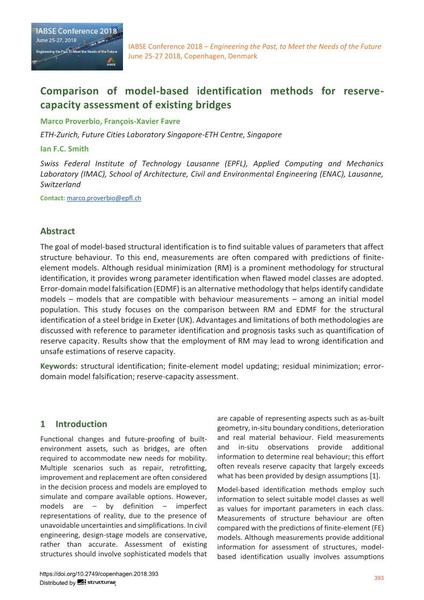| Medium: |
conference paper |
| Language(s): |
English
|
| Conference: |
IABSE Conference: Engineering the Past, to Meet the Needs of the Future, Copenhagen, Denmark, 25-27 June 2018 |
| Published in: |
IABSE Conference Copenhagen 2018 |
|
Page(s):
|
393-400
|
Total no. of pages: |
8 |
|
|
Page(s):
|
393-400
|
| Total no. of pages: |
8 |
| DOI: |
10.2749/copenhagen.2018.393 |
|
Abstract:
|
The goal of model-based structural identification is to find suitable values of parameters that affect structure behaviour. To this end, measurements are often compared with predictions of finiteelement models. Although residual minimization (RM) is a prominent methodology for structural identification, it provides wrong parameter identification when flawed model classes are adopted. Error-domain model falsification (EDMF) is an alternative methodology that helps identify candidate models – models that are compatible with behaviour measurements – among an initial model population. This study focuses on the comparison between RM and EDMF for the structural identification of a steel bridge in Exeter (UK). Advantages and limitations of both methodologies are discussed with reference to parameter identification and prognosis tasks such as quantification of reserve capacity. Results show that the employment of RM may lead to wrong identification and unsafe estimations of reserve capacity.
|
|
Keywords:
|
structural identification residual minimization errordomain
model falsification reserve-capacity assessment finite element model updating
|

